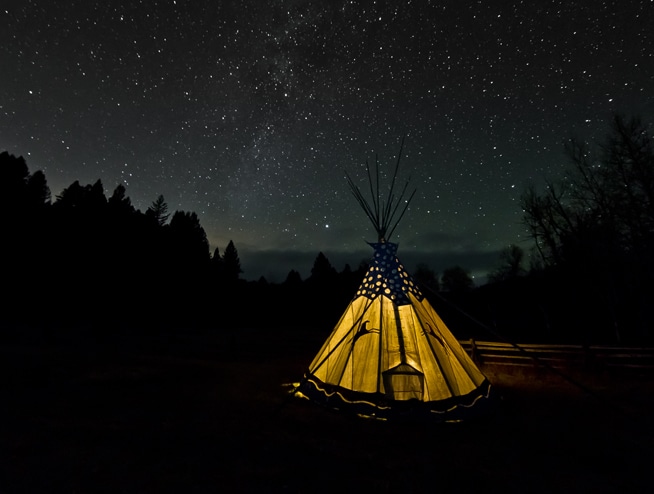Long before Lewis and Clark arrived in the area, the Native Americans referred to the Gallatin Valley as “The Valley of Flowers”. Although the Valley was claimed by the Blackfoot, it is said that it was recognized by all Indians as neutral ground. Legend has it that a band of Sioux, following Bridger Creek encountered a band of Nez Perce and a battle ensued. After two days of endless battle the warriors were spoken to by a figure, the “Spirit Maiden,” standing on what is now known as “Maiden Rock”, who said the beautiful Valley of Flowers was created by the Great Spirit for his children.
“… like a beautiful maiden it is encircled by a white necklace of white-topped mountains… carpeted with flowers and watered by sparkling streams. This is the home of the red man. He comes here to rest. There must be no war, all must be peace, rest and love.” Canyon Cookery, Linda Sellers Peavy, Page 10.
The Spirit Maiden also warned of the arrival of “a pale-faced race… their hand is raised against the red man.” As predicted, by 1806 the white race arrived. Captain William Clark led his Corp of Discovery through the Valley of Flowers. In what would become known as Bridger Pass, Clark wrote of “several leading roads which appear to pass to a gap in the mountain in an east/northeast direction.” The arrival of white trappers and soldiers to the Canyon brought an end to the peaceful existence of the nomadic Indian tribes – though the Indians remained in the Canyon until as late as the early 1900s. Despite frequent Indian attacks, in 1864 Jim Bridger brought his first wagon train through the Canyon. In 1867, due to the continued threat of the Indians, Fort Ellis was constructed three miles east of Bozeman. It was the only Calvary post in Montana. Logs and lumber for the Fort came from the sawmill at the military timber camp which was established by the army on what is now Bohart Ranch in Bridger Canyon. In 1875 the first settler in the Canyon, James Proffitt of Missouri, arrived in his mule-drawn covered wagon. Proffitt, who raised hay and sheep, joined Nelson Story in petitioning a county road to Bridger Canyon which was approved in 1880.
The period between 1880 and 1899 was a time of rapid growth to the Canyon with homesteaders drawn to the surrounding beauty, solitude and lush fertile ground. Many of the creeks in the area bear the names of these original homesteaders. Howard Stone, the Canyon’s fourth settler, set up a water-powered mill along the creek that now bears his name, Stone Creek. He had the help of his brother-in-law, William L. Perkins who settled along Perkins Creek, better known today as Pine Creek. Slushman Creek was named after a miner by the last name “Schlasman” who was one of four prospectors that were killed in a slide that covered the entrance of a mine as well as their cabin. White Creek was named after Tom White – many descendants of White remain in the canyon today. In addition to several other creeks, all of the above named creeks flow through the Lazy J Ranch.
Skiing began in the area as early as 1916. A group of men of Scandinavian descent met Sunday mornings to ski the Story Hills area. By the late-1930s a small tow rope was built to accommodate the skiers on this hill. The Bear Canyon ski area was also being constructed. By 1948, due to scarce snow conditions at both locations, a search began for a site with sufficient snow. Viewed during an air search, a natural bowl on the east side of the Bridgers was located and by the following year the Montana State ski team began to train on what would soon become known as Bridger Bowl. What started as 120 acres has grown to over 2,000 acres of skiable terrain.
Today, people are drawn to Bridger Canyon for the same reasons as the homesteaders over a hundred years ago – the love of the land, fertile ground, the solitude yet close proximity to Bozeman, and the unparalleled surrounding beauty.

